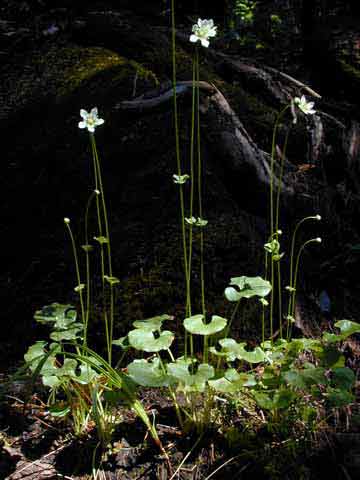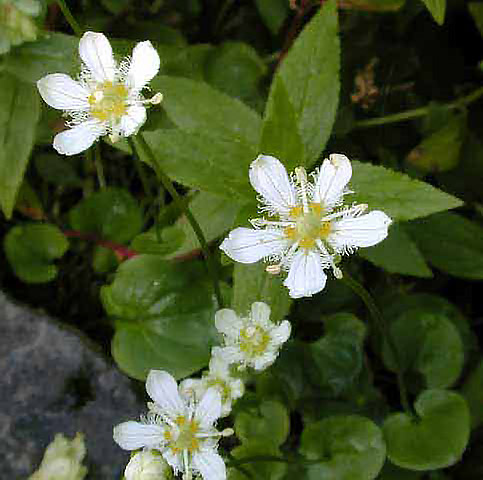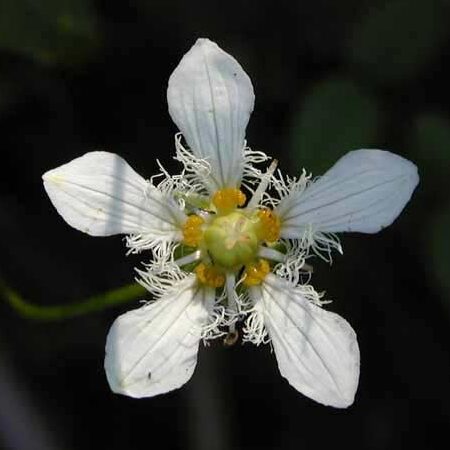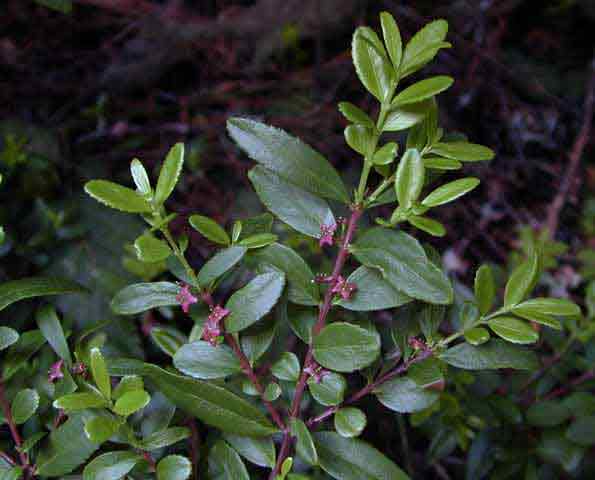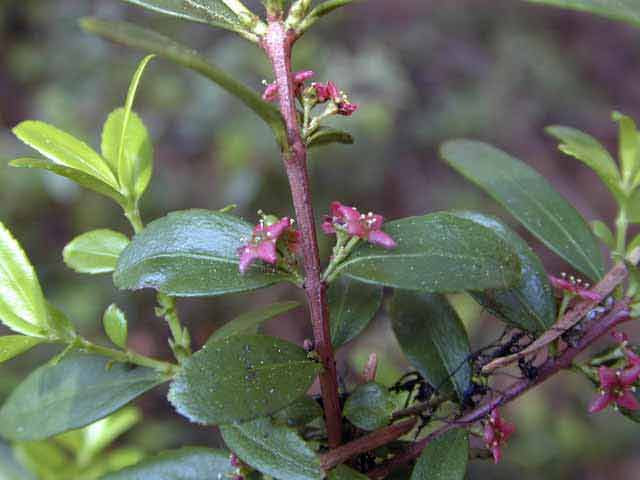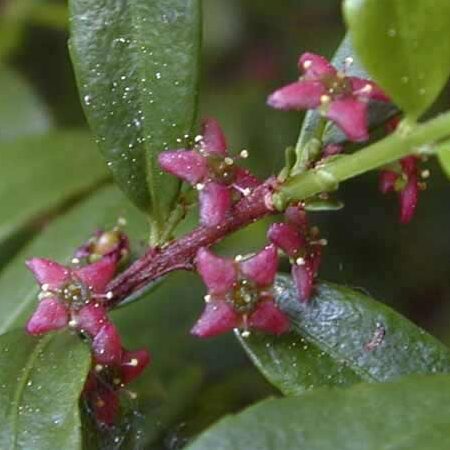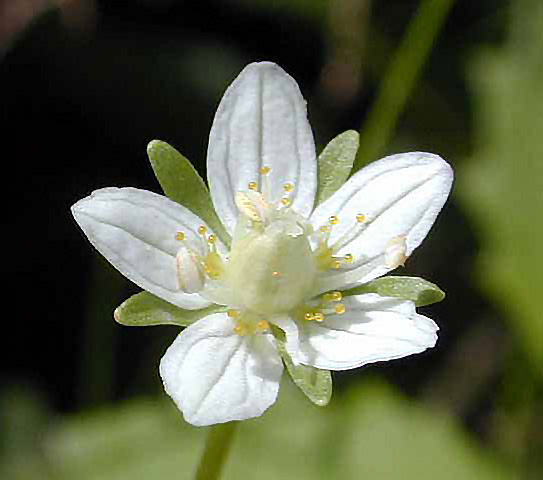“As unlikely as it seems, the flowers on this page belong to the same family.“
About the Bittersweet Family:
Members of the Bittersweet Family are woody plants, including trees, shrubs, and vines, as well as annual or perennial herbs. There are about 96 genera and 1,350 species in the family, most of which grow in the topical or sub-tropical regions of the world. Only 7 native Bittersweet species are found in Washington, 2 of which are shrubs and 5 of which are different species of Grass-of-Parnassus.
The flowers in the Bittersweet Gamily are usually small and have 4-5 petals 4-5 sepals, 3–5 (rarely as many as 10) stamens and 1 pistil.
1: Fringed Grass-of-Parnasssus (Parnassia fimbriata)
Fringed Grass-of-Parnasssus isn’t grass at all. The plant got its name long ago when “grass” was just another word for plant. Parnassus is mountain in central Greece where (according to Greek mythology) the Muses lived.
Fringed Grass-of-Parnassus grows in very wet places in the mountains, especially near waterfalls.
Fringed Grass-of-Parnassus has one very distinctive leaf near the bottom of the stem, a much smaller one about half way up, and a single flower at the top. The plants grow 6 to 18 inches tall.
Photographed: August 29, 2007 – Cascade Pass, Hwy 20, Marblemount, WA
Looking more closely at the flowers you can see where the “fringed” in its name comes from. The lower part of each petal is lined with fleshy hairs. Stamens with large, pollen-bearing, oval anthers at their tip can be seen between the petals.
Photographed: August 29, 2007 – Cascade Pass, Hwy 20, Marblemount, WA.
The flowers are about 1 inch across. In this photo most of the stamens have lost their anthers and vertical veins can be seen on the petals. At the base of each petal are two orange glands.
Photographed: August 29, 2007 – Cascade Pass, Hwy 20, Marblemount, WA.
2: Mountain Box (Paxistima myrsinthes)
Mountain Box or Oregon Boxwood is a short, evergreen shrub that is found on both sides of the Cascade crest.
Mountain Box is rarely more than 3 feet tall. It has small leathery leaves with 1 to 3 tiny maroon flowers in the leaf axils.
The branches of Mountain Box are often used in floral arrangements, which has reduced the populations near urban areas.
Photographed: Iron Goat: Martin Creek, US 2, Skykomish. WA
This photo shows how the flowers emerge from the leaf axils.
Photographed: Iron Goat: Martin Creek, US 2, Skykomish. WA
The flowers of Mountain Box are less than ¼ inch across. They have 4 fleshy, maroon petals and 4 stamens with white anthers.
Photographed: Iron Goat: Martin Creek, US 2, Skykomish. WA
3: Northern Grass-of-Parnassus (Parnassia palustris)
Northern Grass-of-Parnassus is a plant of high elevations and is not as common as the Fringed-Grass of Parnassus in Washington.
At first glance, the flower is quite simple with 5 white, green-veined petals, 5 shorter, green sepals, 5 stamens, and large pistil in the center. But the flower also has extra stamens, 5 sterile ones which are divided into 7-11 slender filaments with drop-like, false sectaries at tip. The flower is about 1 inch across.
July 22, 2012- Wapata Falls, Yoho National Park, British Columbia, Canada
Conclusion:
The Oregon Box and the Grass-of-Parnassus do not appear to belong in the same family, but they do. They are simply three members of a diverse plant family.
Botanists have organized plants into groups called “families.” This used to be done by comparing the parts of the plants and looking for commonalities. The two Grass-of-Parnassus species didn’t seem to fit anywhere. At one time they were in their own family. More recently they were placed in the Saxifrage Family, but Saxifrage plants have a very different structure and Saxifrage flowers do not have glands.
Now with the ability to map out the genetic structure of all living things, botanists discovered that Grass-of-Parnassus belongs to the Bittersweet Family.
